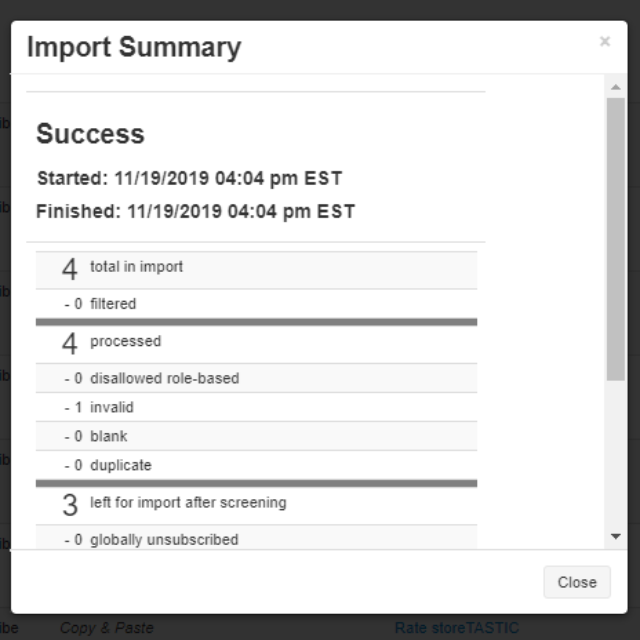“To every thing there is a season, and a time to every purpose….”
This is a song written by Pete Seeger in the late 1950s and first recorded in 1959, yet it couldn’t be truer today when it comes to creating effective surveys.
It’s nearly impossible to create questions for a survey, analyze data, and act on it if first you didn’t set out with a purpose. To get reliable, actionable results, you first need a survey purpose.
Because it’s vital to the success of your survey, let’s look at five tips for defining the purpose of your survey.
#1: Set Your Survey Objective
While this might seem daunting at first, it’s actually quite easy.
To determine the purpose or objective of your survey, simply decide what it is you want to learn and why.
For example, do you want a product or service assessment, or do you want a review of your last whitepaper. It could be anything concerning your company and how your customer felt about a certain interaction with it.
Hand in hand with your objective and purpose is also knowing what you want to do with the information.
For example, if you want to know how participants of your last webinar felt, you probably set your purpose/goal so you can make your next webinar that much better.
The objective of your survey is really just the reason why you want to send one.
Once you have this, you can move on to the creation stage.
#2: Tell Your Respondents About Your Purpose
It can be challenging at times to get people to complete your survey. Yet, if you share your survey’s purpose at the outset, you’ll engender trust and loyalty.
Ultimately, this garners you more responses.
You want to state your purpose right up front. This might be at the beginning of your survey in one or two sentences. Or, it might be in the email you send with the survey link.
In other words, tell your customers what’s in it for them. Why should they help you by answering your survey? Does your purpose really matter to them? Here are some ideas to get you started:
- Does your purpose help you create better products or services for your customers?
- Does it help you lower prices and be more competitive?
- Maybe the purpose helps you improve your customer service.
- The purpose might even help you decide whether or not to launch a new products.
Getting more responses means better data, so always be upfront with your customers by telling them your purpose as well as what you intend to do with the information you get.
You might consider offering them an incentive as well. Get creative and see that it also aligns to your purpose for more emphasis.
Follow up after the survey as well. Explain your results and your next steps.
You’ll find that by being transparent from the outset and providing appropriate follow-up means your customers are more likely to take your first survey and continue taking them as your relationship grows.
#3: Write a Good Purpose
We have seen surveys that obviously have a purpose, but it isn’t a good one. These surveys waste their respondents time.
What makes a bad purpose? Usually it’s a survey that comes with a sales pitch.
You may have seen these kinds of surveys – they are the ones that want to learn more about customer’s personal goals in exchange for something in return. Once this happens, customers are then redirected to a landing page aimed to sell them something.
You can nearly always bet these people won’t be back to complete future surveys if this was their experience.
#4: Prioritize Your Survey Questions
Most surveys should be short and take less than five minutes to complete.
So, as you craft your survey in alignment with your purpose, you want to prioritize only those survey questions that help you answer your goals and objectives.
For example, create questions that help you further your goal. It does you no good to throw in random questions just because you can.
The shorter and more specific your survey, the more quality responses you’ll gain.
#5: Always Analyze and Act on Your Survey
Because you told your respondents your purpose, it’s now time to analyze your data and act on the results.
Involve several members of your team to glean what they can from the data. Once you’ve gotten the answers to your questions, you can then decide how you’ll act upon them.
This should always turn back to your purpose. Compare your results to your original goal and come up with specific, measurable, actionable, reasonable, and timely (SMART) goals.
Then, communicate what you’ll do with the data to all of your customers, even the ones who didn’t complete your survey. By sharing with everyone, you let your customers know you are true to your word.
This might just encourage them to complete your next survey.
Final Thoughts
As we mentioned earlier, the key to the validity and success of your survey is not answers to your questions. It’s actually in its purpose.
Before you sit down to craft your survey, you want to first outline its purpose. In other words, why are you conducting a survey? What do you want to learn? And, what will you do with your results?
You want to have only one main purpose for your survey. It can include some objectives to help you get the correct data, but overall you want one purpose.
For example, the purpose might be a NPS (Net Promoter Score) survey. Or, perhaps you want to find out how a customer likes your product after he/she purchased it. Or, you might want to know about their recent experience with your customer service department.
Bottom line – know exactly what you want to learn, and what you’ll do with the information once you get it. When you start with a solid purpose, everything else falls into place as you craft your successful survey. (tweet this)
Surveys help you make the best decisions for your business. Are you ready to get started with your free Survey Town trial? Start with your free account today, and you can upgrade at any time.
Image: Jordan Madrid on Unsplash




